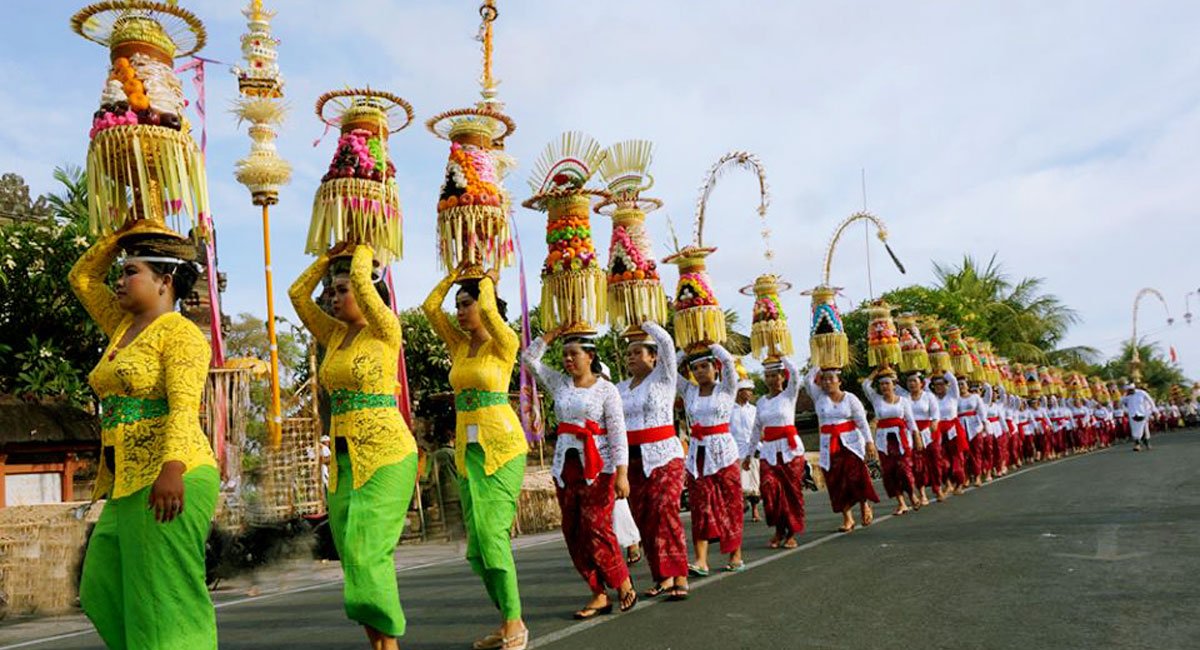The island of the gods is like a paradise on earth, Bali Island
the perfect holiday destination for all ages offering something for everyone. Bali not only offers a variety of customs but also various "adrenaline pump" gardens. There is a lot of exciting entertainment available in Bali, with something new opening all the time. The number of offshore and inland attractions is increasing as many tourists want them. This tropical paradise has a unique blend of modern tourist facilities combined with beautiful shopping and a rich past and heritage. After the popular rafting in Bali, comes the offshore rafting or white water rafting. A more challenging type of entertainment has now become an alternative sport for tourists. While rafting is still a popular activity with trips at Ayung, Telaga Waja, Sungai Unda, etc. Tourists can refresh their minds by witnessing the beautiful scenery along the route. That's not enough, some of the best surfing beaches in the world can be found on the west side of the island while the east side is a wonderful haven for families, with beautiful white sand beaches and gentle seas.
Bali is a small island, only 140 Km by 80 Km and located between the island of Java, the most densely populated and influential of all the islands, and Lombok, one of the quieter and somewhat slower islands. Like many islands, Bali has developed a world of its own. It not only captures what is special about Indonesia but also has its own uniqueness.
Balinese culture is unique. People say that the Balinese have achieved self-satisfaction. The Balinese are proud to have preserved their unique Hindu culture against the advancement of Islam, the dominant religion throughout Indonesia. This is still reflected in everyday life and can be seen in various ceremonies, Balinese festivals and magnificent temples and palaces. The Balinese are skilled craftsmen, especially in carving wood and making objects from turtle shells and from gold, silver and other metals. The Balinese are renowned for their traditional dances, gamelan music and their skill in weaving gold and silver threads, Songket, and for embroidering silk and cotton garments. stone and wood carving,
As for recreation, there is no shortage of options. Nature excursions, horseback riding, diving, surfing - even bungy jumping and white water rafting - await adventures here.
Geographically
Bali is an active volcano and very fertile. Bali has an area of 5620 sq km, measures about 140 km by 80 km and is only 8 degrees south of the equator. Mount Agung is known as the 'mother mountain' over 3000 meters high. South and north of the central mountains are Bali's fertile agricultural lands. The southern region is a wide and gently sloping area where most of Bali's rice crops are grown. The south-central area is the real rice basket on the Island. The northern coastal strip is narrower, rising more rapidly to the foothills of the central mountains, but the main export crops, coffee, copra and rice, are grown here. Cattle are also kept in this area.
Climate
Bali has a tropical climate all year round. The average temperature hovers around 30 degrees Celsius throughout the year. There is a dry season and a rainy season -dry from April to September and wet from October to March- but rain can fall at any time of the year and even during the rainy season, the rain is likely to pass quickly. In general, May to August are the best months in Bali. At that time the climate tends to be cooler and the rain the lightest. Around the coast, the sea breeze absorbs the heat and as we move inland we also move upwards so the altitude serves to keep things cool. The weather in the highlands can be very cool and a warm sweater can be a good idea in a mountain village like Kintamani or Bedugul.
Population
With 2.5 million people, Bali is a very densely populated island. The population is almost entirely Indonesian, with the usual small Chinese contingents in the big cities, a sprinkling of Indian traders, plus a number of more or less regular visitors among Westerners in Bali.
Culture
Every stage of Balinese life is marked by a series of ceremonies and rituals known as Manusa Yadnya. They contribute to the rich, varied and active life led by the average Balinese. There are ceremonies for every stage of Balinese life but often the final cremation ceremony is the largest. A Balinese cremation can be an amazing, spectacular, colourful, noisy and exciting event. In fact, it often takes so long to organize a cremation that years have passed since death.
During that time the bodies were temporarily buried. Of course an auspicious day has to be chosen for cremation and since a large cremation can be a very expensive business, many less wealthy people can take the opportunity to join in on a larger cremation and send their own remains en route at the same time. The Brahmin, however, had to be cremated immediately. As well as being another opportunity for Balinese noise and confusion, this is a great opportunity to observe the incredible energy the Balinese put into creating real works of art that are truly ephemeral. There's a lot more to it than bodies burned in cremations.
The body is carried from the grave (or from the home of the deceased if it is to be cremated 'soon') to the cremation site in a high-rise tower made of bamboo, paper, rope, tinsel, silk, cloth, mirrors, flowers and anything else bright and colorful that we can think of. The tower is carried on the shoulders of a group of men, the size of the group depends on the interests of the deceased and therefore the size of the tower. The funeral of a former king's high priest may require hundreds of people to carry the tower.




